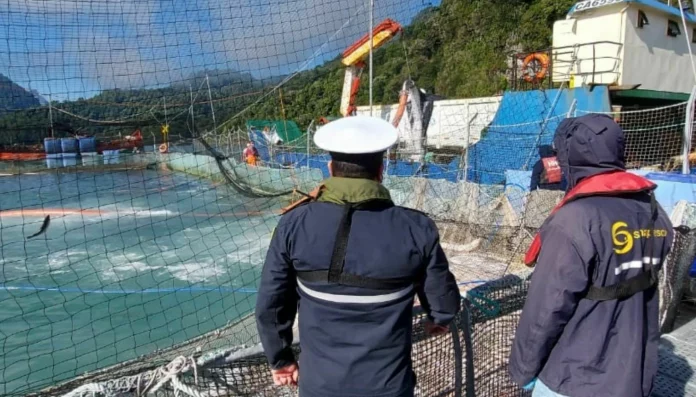Algal blooms have caused estimated losses of more than $1 billion to the country’s aquaculture industry in recent years.
The National Fisheries and Aquaculture Service of Chile (Sernapesca) in the Los Lagos reported on Wednesday that 13 salmon farming sites in the country’s Reloncaví Estuary have activated their emergency plans for Harmful Algal Blooms (HAF).
These activations were prompted by the presence of microalgae known as Thalassiosira pseudonana, which were considered harmful to fish.
This algal bloom is not the same as the infamous “red tide,” and it does not impact bivalve mollusks or other fish species, according to Sernapesca.
Nevertheless, seven of these sites subsequently also initiated their contingency plan for mass mortality, linked to the presence of microalgae. Following an analysis by Sernapesca, it was determined that only two sites were facing mass mortality conditions, as the other five cases did not reach the magnitude or severity initially reported.
Dr. Leonardo Guzmán, an algal bloom expert from IFOP, explained that ideal light and nutrient conditions during spring promote the growth of these microalgae.
Sernapesca has not yet named the salmon producers involved in the incident.
Last week, the farming regions of Biobio, Araucania, Los Rios, Los Lagos, Aysen and Magallanes were put on alert by the authorities.
Algal blooms have caused estimated losses of more than $1 billion to the country’s aquaculture industry in recent years.

